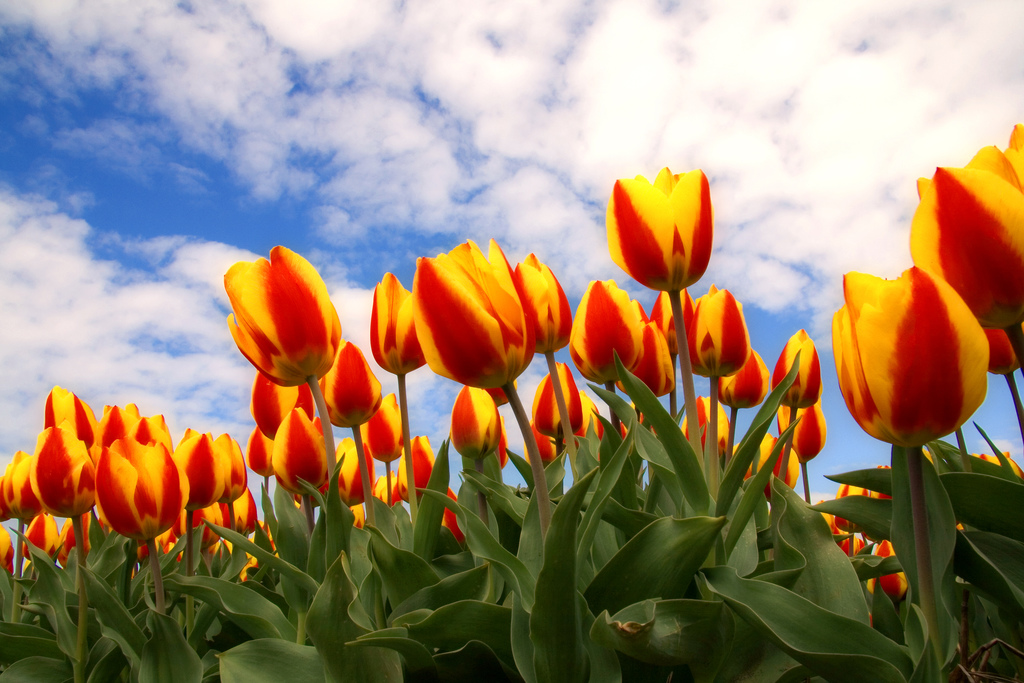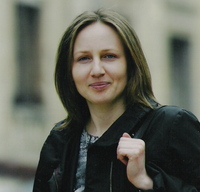
Tulips (siebe /flickr)
In Duba-Yurt, a Chechen village hard hit by the war that devastated the region in the 1990s, there lived an old man who grew tulips. A spark of colour and hope in dark times. A true story that almost seems like a fable
The first time I was in the Chechen village of Duba-Yurt was in 1998. Together with a group of TV journalists, I was filming a report about a woman who had lost five children in the first Chechen war. The roads were destroyed and the old Russian car we were travelling in was getting stuck in ruts, potholes, and puddles more often than not. When our Zhiguli got stuck in the mud of yet another rural road, I noticed groups of children coming and going from a yard. They were going in empty-handed and coming out with huge bouquets of colourful tulips.
While our driver, along with the cameraman and the sound engineer, was trying in vain to pull the car out of the mud, I watched the children and tried to figure out where all those tulips were coming from. Eventually, concluding that probably some weirdo kept a flower shop in that yard, I went to cast an uncertain glance. I wanted to see who, in those dark times, could think of engaging in such an unprofitable activity.
It was a typical Chechen village courtyard, carefully swept. A young woman was busy in front of the little house, which was painted white. I greeted her and said I wanted to buy some flowers. "We do not sell flowers", she smiled. "But the children....", I could not finish my sentence. An old man of about seventy years of age came from the backyard, holding a bouquet of tulips. "Put them in front of the door", he said to the woman, "let anyone who wants take them". And only then did he notice me.
Ahmad was an amazing old man. Small with large lively hands, he did not give off that solemn air of calm and wisdom that leaves an impression upon meeting other senior Chechens. On the contrary, Ahmad was full of life, joy, and almost childlike enthusiasm. We made friends very quickly; a seventy-year old man who cultivated tulips in a village forgotten by God and destroyed by men, and a journalist who had written of nothing but war and human misery for a long time.
Ahmad cultivated tulips. He had been planting flowers in his yard of 800-square meters for forty years. It had all started in exile, he told me. In 1944, when Stalin had ordered the Chechen people to be deported to Central Asia, Ahmad ended up in Kyrgyzstan. It was there that he saw, for the first time in his life, the buds of blood-red tulips. It was love at first sight, and for life. Thirteen years later, with Stalin's death, came the beginning of the so-called “thaw” in the Soviet Union and the rehabilitation of the Chechen people. Survivors were able to return home. Ahmad brought tulip bulbs and seeds back to his native village. From then on, every time his neighbours planted corn and wheat, Ahmad, who stood out like a white crow, devoted himself to his beloved flowers. This earned him a reputation as the village idiot. The neighbours could have understood if he had at least sold them. But, in forty years, Ahmad had not sold a single flower. He gave them to neighbours and relatives, to passers-by, to the children going to school and the teachers, to the local hospital – to everyone.
Ahmad could talk for hours about tulips and their varieties, shades, and specificities. The war in Chechnya had just killed over one hundred thousand people. The entire country lay in ruins. Everyone struggled along as best as they could. But Ahmad lived off his flowers, like an alien landed on Earth in that first tulip blossom he first saw on the endless, hostile plains of Central Asia.
Once, he told me a legend about a yellow tulip. Happiness was hidden, Ahmad said, in the bud of a yellow tulip. For many centuries, the yellow flower never blossomed and no one could reach happiness. Many people tried to open the bud of the yellow flower, but in vain. One day, though, a little boy saw a beautiful yellow flower and froze in amazement. Smiling, he walked up to the tulip. He did not know happiness was hiding inside the flower, he was amazed at the beauty of that fragile bud. And at that very moment, the beautiful tulip bloomed...
A year and a half later, another war began in Chechnya. I kept dealing with war chronicles and did not hear of Ahmad or his flowers for a long time. There was no time for flowers in the early years of war. But in the spring of 2004, I went to Duba-Yurt anyway, to see Ahmad. I joyously anticipated the meeting in the certainty that, as in the past, the old man would greet me with his boyish smile and a huge bouquet of stunning tulips.
But Ahmad did not greet me. No smile, no tulips. He had died four years earlier, said his daughter, the young woman who had surprised me with the phrase "we do not sell flowers" at our first encounter. He had died at the beginning of the second war, killed by the fragments of a bomb. That day, Russian aircraft had bombed several villages, and one of those bombs had fallen on Ahmad's tulip field.








